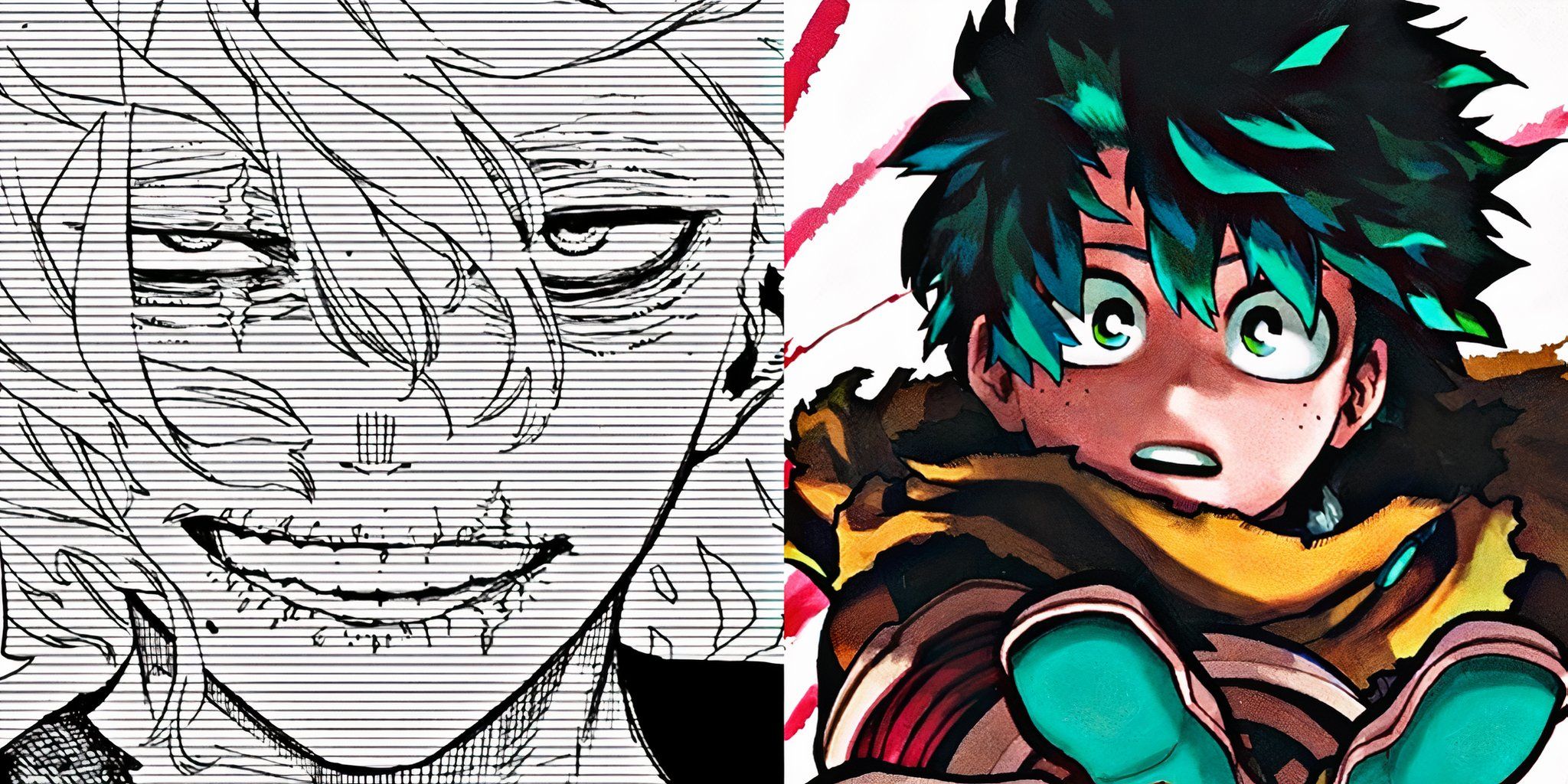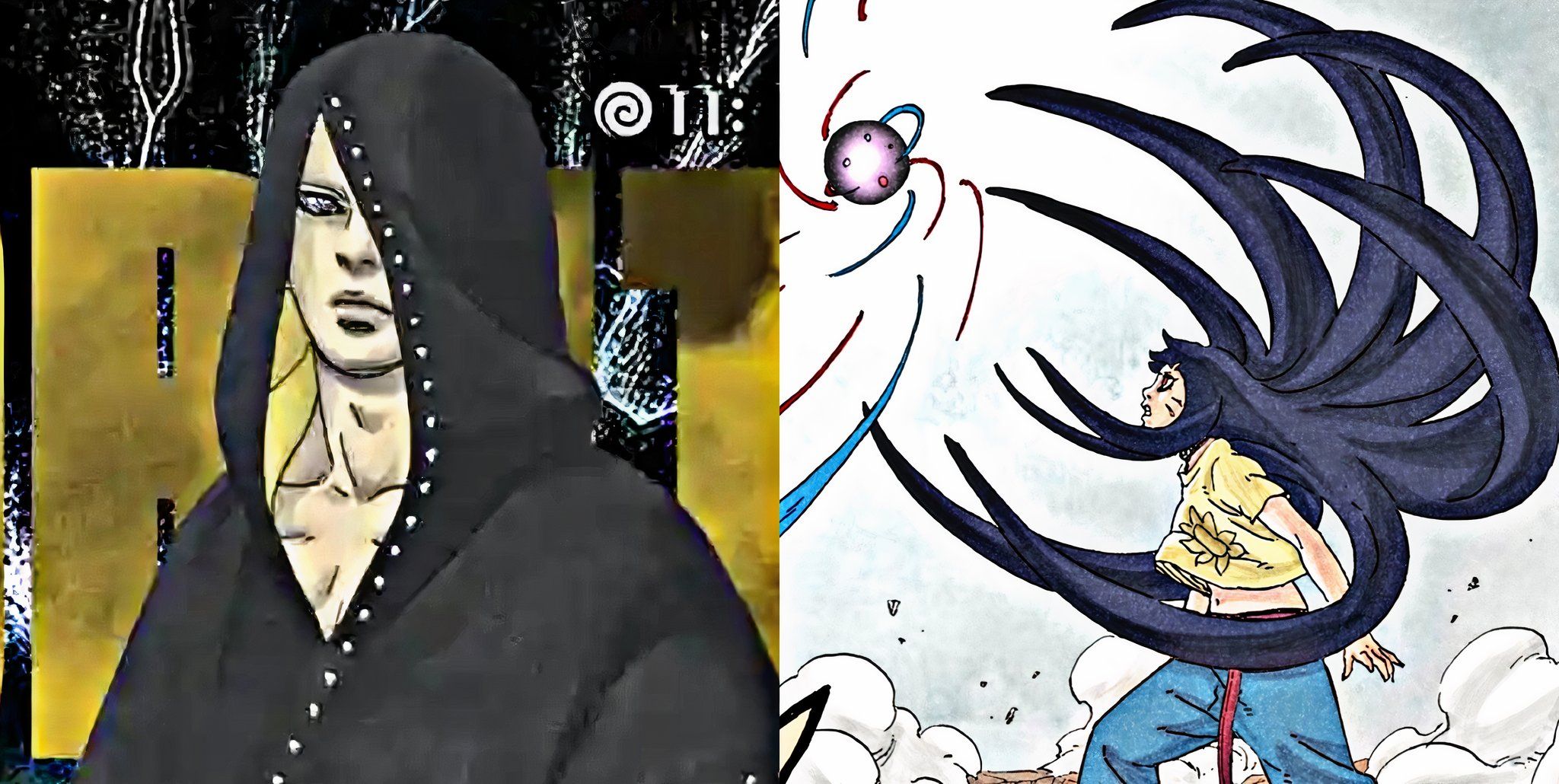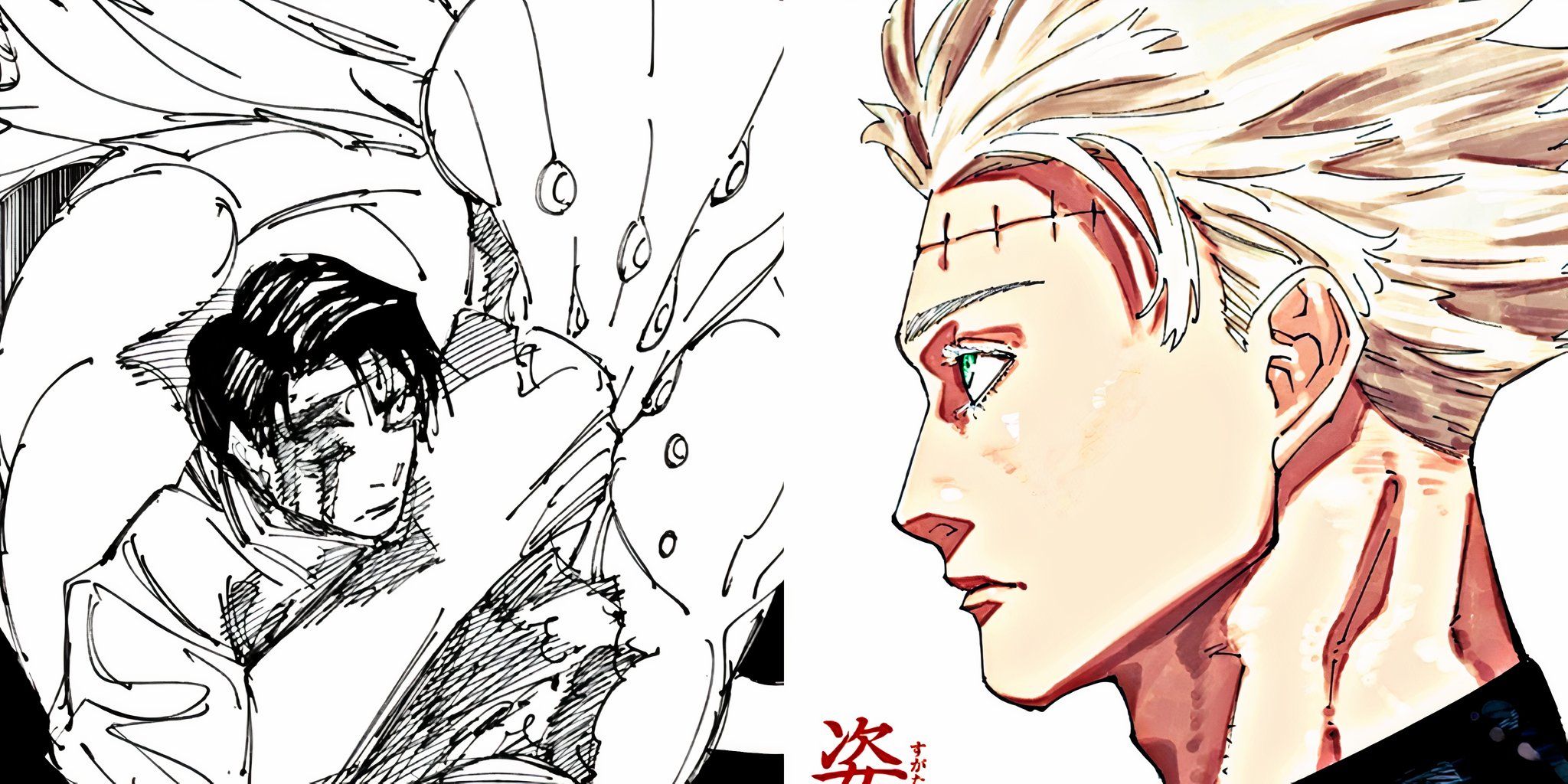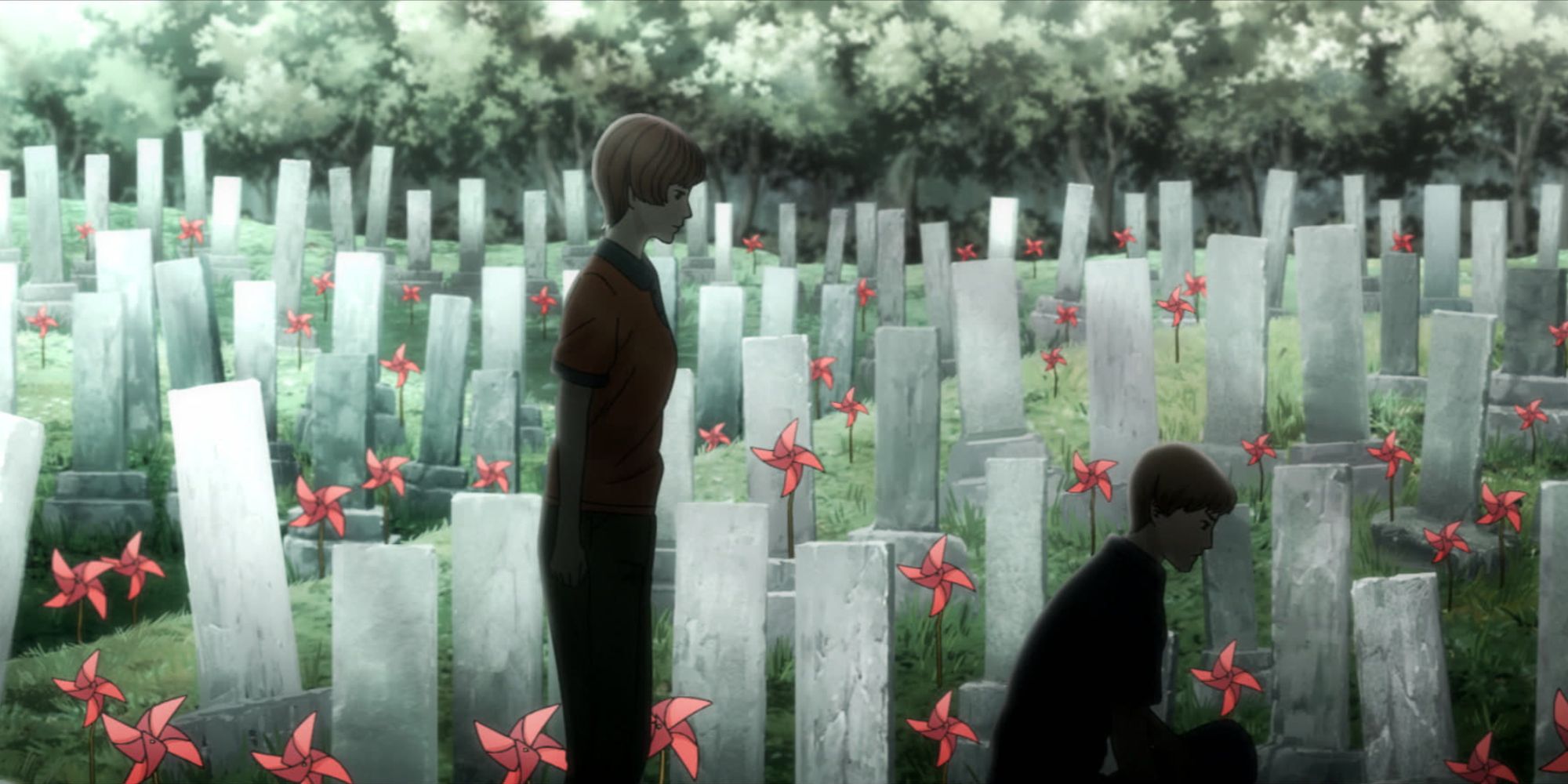Highlights
- "Tomb Town" explores guilt and the weight it carries, comparing it to a heavy stone that crushes the main characters throughout the story.
- The story uses stone imagery to depict the contrast between the peacefulness of the dead and the disturbing restlessness of the character Ayumi's corpse.
- Ito's use of a horrific body design for Ayumi represents the parasitic nature of guilt and serves as a warning against tampering with the natural order of things.
Horror mangaka Junji Ito is a master of purposeful horror, commenting on various facets of humanity and society through the horror genre. One such story is "Tomb Town", which was adapted into an anime episode this year on Netflix in Junji Ito: Japanese Tales of the Macabre.
"Tomb Town" depicts the main characters' guilt over accidentally killing the sibling of a friend in a car accident, and covering it up from her family in cowardice. Ito makes heavy use of the stone metaphor, and how guilt sits on you like a rock. In this case, literally.
What is "Tomb Town" about?
The story begins with young brother and sister Tsuyoshi and Kaoru driving to a small town to visit their friend Izumi and enjoy the summer vacation. The road is long with plenty of beautiful scenery. Unfortunately, tragedy strikes when Tsuyoshi accidentally knocks a young girl on the road as they drive through the mountains, wounding her badly and eventually killing her. Out of panic and uncertainty about what to do, they put the corpse in the boot of their car and continue on to the town.
Upon arrival, the siblings notice that the town's roads have many tombstones all over them. It is common knowledge in this town that tombstones pop up where a person has died, hence the tombstones on the road indicate where a person died in a traffic accident. When Izumi meets up with them, she reassures them that it is startling at first to see them all over the place, but it is normal in the town. There is even one in Izumi's house from someone who used to live there. This information pales the siblings, for lying in their boot is a corpse, so what will they do if a tombstone starts protruding from their boot?
As the trio walks around the town, Tsuyoshi and Kaoru learn more about the nuances of this peculiar tombstone custom. They witness a hospital rushing a patient on his deathbed outside so a tombstone won't pop up inside. Tsuyoshi tries to move a cat that was run over on the road as they walk some more, until Izumi stops him. She says that the body cannot rest peacefully if it is moved all the time and a tombstone won't form. All this information is too much for Kaoru, to the point where she feels sick, feighning car sickness in front of Izumi. Tsuyoshi, on the other hand, is very calm and collected.
Back at Izumi's house, the family is worried about where Ayumi, Izumi's younger sister, is, for she hasn't been home since she left for the mountains ages ago. The siblings freeze when they realize that Ayumi is the girl they knocked on the road. They decide that they need to act naturally until they figure out what to do. The town go on a search party for Ayumi, reminding everyone that she was wearing a bracelet with a bell on it that had her name. Tsuyoshi plays along with searching for Ayumi, while Kaoru remains quiet and guilty.
The townspeople suspect that she fell into the old well, an endless pit that is dug too deep. Legend has it that the bodies of those who didn't die peacefully were thrown in there. The next day, the siblings see what a peaceful body looks like, the patient from the hospital. They later find Izumi looking through their car, for police are investigating the possibility of her being hit by a car due to skidmarks on the road by the mountains.
Agitated by all this and under crushing guilt, the siblings decide to dump Ayumi's body in the old well. When they open the boot, they find that Ayumi does not look like the peaceful body they saw earlier. She is extremely heavy, with gems and minerals protruding from all orifices of her body in a gruesome display. Tsuyoshi accidentally cuts himself on Ayumi's corpse as they drop her into the well. Out of guilt, he hallucinates that Ayumi's stone-ridden body crawled out of the well and is wailing for Izumi, pointing out that he killed her. The siblings then quickly leave town.
The next day, Izumi finds Ayumi's bracelet by the old well, figuring out where her sister is. Kaoru is depressed at home, while Tsuyoshi experiences shakes and shivers. He notices that where he cut his hand is growing gemstones, like Ayumi. The story ends with Tsuyoshi turning into a replica of Ayumi, but alive; while Izumi and her parents commit suicide in their home, unable to process their loss.
The stone image of peace
Ito uses stone imagery quite frequently in this short story, the tombstones being the most obvious example. However, he incorporates stone into everything. When the siblings see the peaceful body of the patient who died at the hospital, not only is a tombstone protruding from his body, but the body itself is turning into stone. The color of the stone and body match, the cohesiveness signifying the full process of death. The man's face was not in pain or discomfort, but simply at ease.
It resembles a tree that has roots planted into the ground as it grows taller and taller. Even the color is not grim, it is a warm brown. This is how the body is presented in Ito's world as being at peace, the image is almost elegant despite being disturbing. The locals also comment that the body must be undisturbed and was complimented as a "fine gravestone", so the town sees the beauty in letting the dead rest peacefully.
The stone image of restlessness
The stark difference between the patient and Ayumi's corpses is alarming. Where the former is cohesively colored, the face is peaceful and the tree root image is almost beautiful; Ayumi's body is completely the opposite. Her gruesome fate is visualized through the disgusting way Ito has drawn her into her restless state. She is covered in different colored rocks that are growing out of her body, she is also incredibly heavy. Her face is petrified in a painful state, as if she is in eternal agony.
What is Ito trying to say about guilt?
Junji Ito's use of a heavy object to represent death is a clever one. By associating the corpses with heaviness and rock, he equates this to the sinking feeling of guilt in the siblings, especially Tsuyoshi. Their actions sit on their consciences like a heavy rock, that crushes them more and more as the plot of the story thickens. In fact, guilt literally consumes Tsuyoshi by the end of the episode as he turns into the same state as Ayumi, but alive. The ugliness of Ayumi's body represents the ugly and almost parasitic nature of guilt, an emotion that grows and festers until it consumes you whole.
In creating a horrific design for a body not at peace, perhaps Ito is also trying to comment on how humans handle the natural order. Death is a sad yet natural part of life, something the locals in the town take very seriously in their odd tombstone custom. By the siblings messing with a soul trying to rest for their own selfish reasons, they cursed Ayumi's family indirectly by causing them pain and death, as well as Tsuyoshi facing a cruel fate. Ito could be telling us to relinquish control for our selfish reasons, for more than just ourselves are affected.
Between Ayumi's image and the peaceful one, it is clear which visual is more jarring and memorable to the viewer. In "Tomb Town", Ito tries to scare the viewer into engaging in actions that result in crushing guilt. Perhaps he is trying to warn us as mankind not to tamper with the natural order of things, for no good will come of it for our consciences. After all, guilt is a consumatory emotion that can weigh on you like a heavy stone.
Junji Ito: Japanese Tales of the Macabre can be streamed on Netflix.







